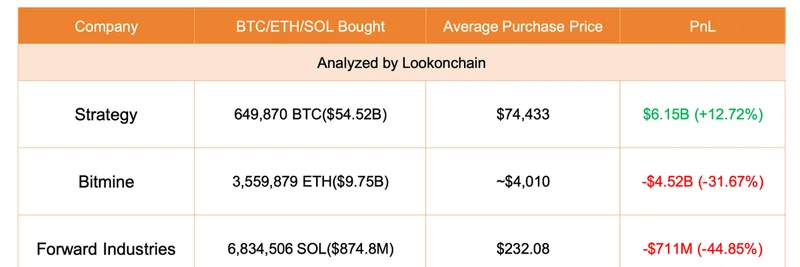Recently, the crypto community buzzed about a tweet from BSC News spotlighting VeChain's unique three-token flywheel. The post links to a detailed article on BSC News that breaks down how VeChain is evolving its ecosystem for better efficiency and user engagement. As a platform dedicated to meme tokens here at Meme Insider, you might wonder: what's a enterprise-focused blockchain like VeChain got to do with the wild world of memes? Well, plenty—especially when it comes to designing tokenomics that go beyond hype and create real, self-sustaining value.
VeChain's approach offers a blueprint for meme token creators who want to build communities that last. Let's dive into the details of this flywheel and pull out some actionable insights.
The Evolution of VeChain's Token Model
VeChain didn't start with a perfect system; it evolved over time to meet the needs of its growing network. Initially, the platform automatically generated VTHO—the gas token—for all VET holders to kickstart activity and ensure smooth transactions. This was like giving everyone free fuel to get the engine running.
Now, as the ecosystem matures, VeChain is shifting to a staking-based model through its StarGate platform. Holders stake their VET to generate VTHO, with over 13,000 nodes already minted and more than 6 billion VET locked in. This move focuses rewards on active participants, reducing inflation and boosting network security. The upcoming Hayabusa upgrade will take this further by burning 100% of transaction fees paid in VTHO, tying the token's scarcity directly to real-world usage.
This phased evolution shows how token models can adapt. For meme tokens, which often launch with simple mechanics, thinking about long-term upgrades could prevent the common "pump and dump" fate.
Breaking Down the Three Tokens
At the heart of VeChain's flywheel are three interconnected tokens, each with a clear purpose. This setup creates a circular economy where activity in one area fuels the others.
Starting with VET, the utility token. It's the foundation of the network, used for staking to secure the blockchain and vote on governance decisions. With a fixed total supply of about 86.7 billion tokens (and 86 billion circulating), VET provides stability and predictability. Staking VET not only helps run the network but also generates VTHO rewards, encouraging long-term holding.
Next is VTHO, the gas token that powers everything on VeChainThor, the platform's blockchain. Whether you're executing a smart contract or recording data, you pay in VTHO. As mentioned, the Hayabusa upgrade will burn all these fees, meaning more network activity leads to less VTHO in circulation. This deflationary pressure can drive value, much like how Ethereum's EIP-1559 burns ETH fees.
Finally, there's B3TR, the reward token tied to VeBetter—a sub-ecosystem focused on sustainability. Users earn B3TR by verifying eco-friendly actions, like using a reusable coffee cup or charging an electric vehicle, all recorded on the blockchain. To claim these rewards, you need to spend VTHO, which gets burned in the process. VeBetter has already onboarded over 5 million users, turning blockchain into a tool for real-world impact.
How the Flywheel Spins: A Self-Reinforcing Cycle
Imagine this in action: You stake VET on StarGate to earn VTHO. Then, you use that VTHO to interact with VeBetter, recording a sustainable action. The VTHO is burned, reducing supply, while you receive B3TR as a reward. This B3TR can be used or traded, but the key is that every step increases network activity, which boosts demand for VTHO and, by extension, value for VET stakers.
It's a flywheel because momentum builds on itself. More staking means stronger security, more transactions mean more burns, and more rewards mean more users. VeChain's design avoids reliance on speculation by linking value to utility and participation.
Lessons for Meme Token Projects
Meme tokens thrive on community and virality, but many fizzle out due to poor tokenomics. VeChain's model highlights ways to add depth:
Multi-Token Utility: Instead of one token doing everything, consider a setup where a main token (like VET) handles governance and staking, a secondary for fees, and a third for rewards. For a meme project, this could mean a base token for holding, a "gas" for community events, and rewards for memes or social challenges.
Deflationary Mechanisms: Burning fees like VTHO does can create scarcity. Meme tokens could burn a portion of transaction fees to reward holders, tying value to engagement rather than just hype.
Incentivizing Real Actions: B3TR rewards sustainable behaviors, but imagine a meme token that rewards users for creating viral content, participating in AMAs, or donating to causes. This builds a loyal community and gives the token purpose beyond trading.
Phased Rollouts: VeChain's evolution from auto-generation to staking shows the power of upgrades. Launch your meme with simple mechanics, then introduce staking or rewards to keep things fresh.
Of course, meme tokens operate in a different lane—fun, fast, and often chaotic. But incorporating elements of VeChain's flywheel could help them evolve from short-lived trends into enduring ecosystems. If you're building the next big meme, check out VeChain's official site for more inspiration.
Common Questions About VeChain's Flywheel
What makes VeChain's model sustainable?
The integration of staking, fee burning, and rewards creates a balanced economy where increased usage directly benefits token holders through scarcity and incentives.
How can meme token devs apply this?
Start small: Add staking for rewards and burn mechanisms to encourage holding. Tie rewards to community actions to foster engagement.
What's next for VeChain?
The Hayabusa upgrade will enhance burns and focus VTHO generation on stakers, potentially reducing inflation by up to 72%. Keep an eye on it for more tokenomics innovations.


